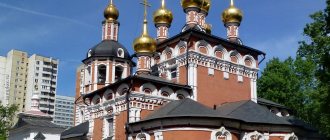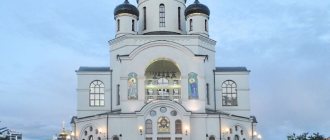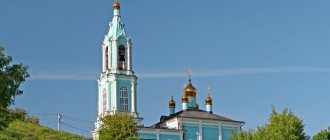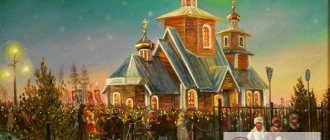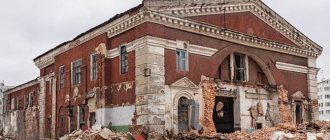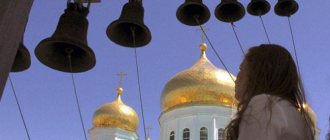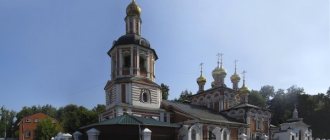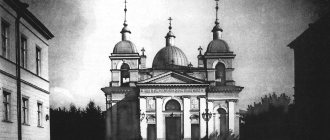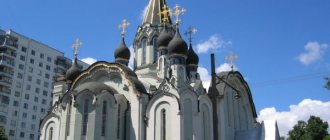Mir
Palestine Church of the Nativity (Bethlehem) Map loading...
{"format":"leaflet","minzoom":false,"maxzoom":false,"limit":50,"offset":0,"link":"all","sort":[""], "order":[],"headers":"show","mainlabel":"","intro":"","outro":"","searchlabel":"\u2026 \u0441\u043b\u0435\ u0434\u0443\u044e\u0449\u0438\u0435 \u0440\u0435\u0437\u0443\u043b\u044c\u0442\u0430\u0442\u044b","default":"","import-annotation":false,"width ":"auto","height":"350px","centre":{"text":"","title":"""link":"""lat":31.704305999999998988414517953060567378997802734375,"lon": 35.207639000000000351064954884350299835205078125,"icon":""},"title":"","label":"","icon":"","lines":[],"polygons":[],"circles":[ ],"rectangles":[],"copycoords":false,"static":false,"zoom":8,"defzoom":14,"layers":["OpenStreetMap"],"image layers":[] ,"overlays":[],"resizable":false,"fullscreen":true,"scrollwheelzoom":true,"cluster":false,"clustermaxzoom":9,"clusterzoomonclick":true,"clustermaxradius":80, "clusterspiderfy":true,"geojson":"","clicktarget":"","showtitle":true,"hidenamespace":false,"template":"","userparam":"","activeicon": "","pagelabel":false,"ajaxcoordproperty":"","ajaxquery":"","locations":[{"text":"\u003Cb\u003E\u003Ca href=\"/palomnik/%D0% A5%D1%80%D0%B0%D0%BC_%D0%A0%D0%BE%D0%B6%D0%B4%D0%B5%D1%81%D1%82%D0%B2%D0%B0_% D0%A5%D1%80%D0%B8%D1%81%D1%82%D0%BE%D0%B2%D0%B0_(%D0%92%D0%B8%D1%84%D0%BB%D0 %B5%D0%B5%D0%BC)\» title=\»\u0425\u0440\u0430\u043c \u0420\u043e\u0436\u0434\u0435\u0441\u0442\u0432\u0430 \u0425\u0440\u0438\ u0441\u0442\u043e\u0432\u0430 (\u0412\u0438\u0444\u043b\u0435\u0435\u043c)\»\u003E\u0425\u0440\u0430\u043c \u0420\u043e\u0436 \u0434\u0435\u0441\ u0442\u0432\u0430 \u0425\u0440\u0438\u0441\u0442\u043e\u0432\u0430 (\u0412\u0438\u0444\u043b\u0435\u0435\u043c)\u003C/a\u003E \u003C/b\u003E\ u003Chr /\u003E\u003Ca href=\»/palomnik/%D0%A1%D0%B2%D0%BE%D0%B9%D1%81%D1%82%D0%B2%D0%BE:%D0%90 %D0%BD%D0%BD%D0%BE%D1%82%D0%B0%D1%86%D0%B8%D1%8F\" title=\"\u0421\u0432\u043e\u0439\u0441\u0442 \u0432\u043e:\u0410\u043d\u043d\u043e\u0442\u0430\u0446\u0438\u044f\»\u003E\u0410\u043d\u043d\u043e\u0442\u0430\u0446\u0438 \u044f\u003C/a\ u003E: \u0445\u0440\u0438\u0441\u0442\u0438\u0430\u043d\u0441\u043a\u0430\u044f \u0446\u0435\u0440\u043a\u043e\u0432\u044c\ u0432\u0412\u0438\u0444\u043b \u0435\u0435\u043c\u0435, \u043f\u043e\u0441\u0442\u0440\u043e\u0435\u043d\u043d\u0430\u044f, \u0441\u043e\u0433\u043b\u043 0\u0441\u043d\u043e\u043f \u0440\u0435\u0434\u0430\u043d\u0438\u044e, \u043d\u0430\u0434 \u043c\u0435\u0441\u0442\u043e\u043c \u0440\u043e\u0436\u043 4\u0435\u043d\u0438\u044f\ u0418\u0438\u0441\u0443\u0441\u0430\u0425\u0440\u0438\u0441\u0442\u0430. \u041d\u0430\u0440\u044f\u0434\u0443 \u0441 \u0425\u0440\u0430\u043c\u043e\u043c \u0413\u0440\u043e\u0431\u0430 \u0413\u043 e\u0441\u043f\u043e\u0434\u043d \u044f \u044f\u0432\u043b\u044f\u0435\u0442\u0441\u044f \u043e\u0434\u043d\u0438\u043c \u0438\u0437 \u0434\u0432\u0443\u044 5\u0433\u043b\u0430\u0432\u043d \u044b\u0445 \u0445\u0440\u0438\u0441\u0442\u0438\u0430\u043d\u0441\u043a\u0438\u0445 \u0445\u0440\u0430\u043c\u043e\u0432 \u0421\u0432\u044f\u0442\u043e \u0439 \u0437\u0435\u043c\u043b\u0438.","title":"\u0425\u0440\u0430\u043c \u0420\u043e\u0436\u0434\u0435\u0441\u0442\u0432\u0430 \u0425\u0440 \u0438\u0441\u0442\u043e\u0432\u0430 (\u0412\u0438\u0444\u043b\u0435\u0435\u043c)","link":"""lat":31.70430599999999898841451795306 0567378997802734375,"lon":35.207639000000000351064954884350299835205078125," icon":""}],"imageLayers":[]}
31.704679; 35.203736
Palestine, Bethlehem
Palestine
Phones:
+972 (2) 276-60-40, fax: +972 (2) 276-60-41; +972 (2) 625-00-94 (Pilgrimage service of the Russian Spiritual Mission).
Church of the Nativity
- a Christian church in Bethlehem, built, according to legend, over the birthplace of Jesus Christ. Along with the Church of the Holy Sepulcher, it is one of the two main Christian churches in the Holy Land. The church is jointly administered by the Jerusalem Orthodox Church, the Armenian Apostolic Church and the Roman Catholic Church.
One of the oldest continuously operating churches in the world. The first temple over the Cave of the Nativity was built in the 330s at the direction of Emperor Constantine the Great. Its consecration took place on May 31, 339, and since then services here have been practically uninterrupted. Modern basilica VI-VII centuries. is the only Christian temple in Palestine that has survived intact from the pre-Muslim period.
On June 29, 2012, at the 36th session of the UNESCO World Heritage Committee, held in St. Petersburg, the basilica was inscribed on the World Heritage List.
History[edit]
Byzantine period[edit]
The Basilica of the Nativity was founded by Saint Empress Helena during her pilgrimage to the Holy Land in the mid-330s.
...she erected two temples to the worshiped God: one at the cave of birth, the other on the mountain of ascension, for Emmanuel (God with us) deigned to be born for us underground, and the Jews recognize Bethlehem as the place of his carnal birth. Therefore, the most pious Vasilisa decorated this sacred cave in every possible way and honored the burden of the Mother of God with wondrous monuments. And a little later, Basileus honored the same cave with his offerings, adding gold and silver gifts and various veils to the bounty of his mother. (c) Eusebius of Caesarea
The place that Elena chose is not directly indicated in the Gospels; only the apocryphal Proto-Gospel of Jacob tells about a certain cave. Origen first wrote about a cave in Bethlehem around 247; he claims that Christ was born in the city itself (other authors, such as Justin, placed the cave in the vicinity of Bethlehem or halfway from Jerusalem) and calls the place of the Nativity a cave that residents show to pilgrims.
This temple, like a number of others built by Emperor Constantine in the Holy Land, according to the testimony of Eusebius of Caesarea and Cyril of Scythopolis, was not intended to hold divine services, but to create an opportunity for everyone to see places of gospel history. However, the pilgrim Silvia (Etheria) (end of the 4th century), in her notes on the pilgrimage to the Holy Land, reports that on Thursday of Bright Week from Jerusalem, believers go to Bethlehem for the all-night vigil, noting that it takes place in the church where “there is a cave where The Lord was born."
The Basilica of Constantine was destroyed by fire in 529 during the Samaria uprising, as evidenced by the results of archaeological excavations of 1934-1936. In general, the Bethlehem Basilica of Constantine repeated the general features of the Church of the Holy Sepulcher. In the modern building, the best preserved parts of it are the floors.
During the reign of Emperor Justinian, Savvas the Sanctified sent him a petition to restore the basilica. The temple built by Justinian was preserved during the Persian invasion (612-629), about which a legend has been preserved, known since the 9th century:
Saint Helena ordered to decorate the church on the western side with a mosaic depicting the Mother of God with the Child on her chest and the adoration of the Magi. ...The Persians, upon their arrival in Bethlehem, were amazed by the picture of the Persian magi-astrologers, their compatriots. Out of reverence for their ancestors, they preserved the church.
During the conquest of the city by Caliph Al-Hakim in 1009, the basilica was also not damaged, since Muslims revered the birthplace of Christ (the southern transept of the temple was separated by them and used as a mosque).
Period of the Crusades[edit]
During the Byzantine period, the basilica was a martyrium church and did not have an episcopal see. During the period of the Kingdom of Jerusalem, the basilica became the see of the Latin bishop of Bethlehem and Ascalon (from 1100). Baldwin I was crowned there on Christmas Day in 1100, and Baldwin II in 1118. During this period, the Basilica of the Nativity was described by numerous pilgrims of the 12th-13th centuries. In the 12th century, the basilica was surrounded by monastery buildings, as well as a defensive wall with rectangular projecting towers.
After the conquest of Bethlehem by the army of Salah ad-Din (1187), the Latin bishop and clergy were expelled from the basilica. Five years later, 2 Catholic priests and a deacon received permission to return to the temple, but he himself was handed over by the Muslim authorities to representatives of the Syrian Orthodox Church.[6]
In 1229, Bethlehem again came under Frankish control. Due to constant wars, in 1244 the basilica was desecrated by the Khorezmian Turks, and in 1263 one of the monasteries adjacent to the temple was destroyed. In 1266, the Mamluk Sultan Baybars I exported marble and columns to Cairo. Since 1271, Catholic pilgrims began to visit Bethlehem again, and since 1277 they were allowed to perform divine services. Since 1347, the Catholic Church in the basilica has been represented by the Franciscan Order, which to this day owns the throne in the chapel of the Manger of the Cave of the Nativity. Since 1244, the Greek Church has owned the main altar of the basilica and the friary at its southern wall.
Ottoman period[edit]
After the conquest of Palestine by the Ottoman Empire, the rights of Christians to the Basilica of the Nativity were not limited. With the permission of the authorities, the temple was repaired several times: in 1479, a lead roof was installed, made with the money of the English king Edward IV; in 1670-1671, the roof was repaired by the Greeks, who also installed a new iconostasis in the basilica (replaced with a new one in 1764).
An earthquake in 1834 and a fire in 1869 caused damage to the interior of the Cave of the Nativity and necessitated renovation work. Donations (bells, chandeliers) were repeatedly sent to the temple from the Russian emperors Alexander III and Nicholas II.
Founding history
Over the fifteen hundred years of its existence, the Church of the Nativity has experienced many events. But, despite everything, he practically did not interrupt his work.
Church of the Nativity in Bethlehem
Saint Helena, the mother of the first Byzantine emperor Constantine, devoted a lot of time to searching for relics associated with biblical events. In the 30s of the 9th century, she came to Bethlehem and persuaded the local rabbi to show her the place where the baby Jesus appeared. A small church was built at the indicated location. Initially, the building was not intended for religious services. She protected the holy place and made it possible for all Christians to see it. But after a few years, services were held in the church.
Interesting: historians note that the first building of the Church of the Nativity was similar to the Church of the Holy Sepulcher in Jerusalem.
The emergence of a modern building
At the beginning of the 6th century, the original building burned down during the Samaritan revolt. In 531, on the site of the burnt building, by order of Emperor Justinian, a new temple was erected. This building exists in almost unchanged form to this day.
Architecture[edit]
The basilica has five naves. After its reconstruction under Emperor Justinian, the dimensions of the basilica became 53.2 by 26.8 meters (the length of the transept is 36 meters). During the reconstruction, the eastern altar part of the temple was expanded, an exonarthex and an atrium were added.
The temple was built of hewn stone, the roof was covered with wood. The naves of the basilica are separated by a colonnade of ten columns (there were nine in the Constantine basilica), made of pink Bethlehemite. The columns are crowned by capitals of the Corinthian order. The walls and floor of the basilica are lined with marble; in the upper part of the walls there were mosaics, which have survived only in fragments. Initially, the interior space was illuminated by 22 windows, which are currently blocked.
Latest restoration
In 2010, it was announced that a multimillion-dollar restoration program would soon be implemented. The initial stage of restoration work was completed in January-February 2016. The project is partly funded by Palestinians and carried out by a team of Palestinian and international experts. New windows were installed, structural repairs to the roof were completed, and statues, stained glass, icons, and mosaics were cleaned and restored. Even though Palestinians are mostly Muslim, they consider the church a national treasure and one of the most visited tourist sites. Palestinian Authority President Mahmoud Abbas has been actively involved in the restoration project led by Ziad al-Bandak.
Shrines[edit]
• Cave of the Nativity
Under the pulpit of the basilica is the greatest Christian shrine - the Cave of the Nativity. The birthplace of Christ is located in the eastern part of the cave and is marked with a silver star. In surviving written sources, the cave was first mentioned around the year 150. An underground temple has been located here since the time of St. Helena.
• Bethlehem Icon of the Mother of God
The icon depicts the Virgin Mary smiling, hugging the baby Jesus Christ to her. The icon is unique and is considered miraculous, along with the icon of the Vladimir Mother of God and the icon of the Kazan Mother of God in Rus'.
• Relics of 14,000 Bethlehem babies (in a cave near the temple)
• Tomb of rights. Rachel (between Jerusalem and Bethlehem; belongs to the Jews)
• Cave-tomb of Blessed Jerome
UNESCO recognition
In 2012, the church complex became the first Palestinian building to be included on the World Heritage List. Before this, a vote was launched in which other Israeli-Palestinian objects were represented (for example, the Temple of Solomon), but the Church of the Nativity still won. And this despite the active opposition of the United States and Israel. The church complex was immediately approved as a World Heritage Site in accordance with criteria four and six of the UNESCO statute. The decision was controversial from a technical and political point of view. The temple has also been included in the List of World Heritage Sites in Danger as it is severely deteriorating and subsiding due to regular water leaks.
Where to stay[edit]
- Pilgrim's House in Bethlehem
In light of the emerging stability and further settlement of the situation in Palestine, the Russian Orthodox Church opened the Pilgrim Residence in Bethlehem, expressing hope for the possibility of further peaceful coexistence of the peoples of the Holy Land.
The pilgrim's house in Bethlehem is located 200 meters from the great Christian shrine - the Church of the Nativity. Thanks to this location, every morning guests have the opportunity to pray during the Divine Liturgy in the cave where the Lord Jesus Christ was born.
The hotel creates all the necessary conditions so that every pilgrim visiting the Holy Land feels the cordiality and hospitality of the Holy City of Bethlehem and retains the joy of the Nativity of Christ in his heart for a long time.
The hotel was built in 2000 with the blessing of His Holiness Patriarch Alexy II of Moscow and All Rus'.
Near the great Christian shrine, the Residence provides for a comfortable and safe stay:
- 62 standard rooms for accommodation from 1 to 3 people.
- 8 VIP suites.
- Presidential Suite with Jacuzzi, elevator and study.
Accommodation in the Pilgrim House in Bethlehem is carried out through the Pilgrimage Service of the Russian Spiritual Mission.
Address:
Pilgrim Residence. 73, Milky Grotto Street, Bethlehem.
Mailing address:
Pilgrim Residence. 73, Milky Grotto Street, Bethlehem, Palestine POB436
Phones:
+972 (2) 276-60-40, fax: +972 (2) 276-60-41; +972 (2) 625-00-94 (Pilgrimage service of the Russian Spiritual Mission).
Email:
Gospel Events
According to the Old Testament, Christ was born in 5508 from the creation of the world. When Mary carried the Savior in her womb, she and her husband Joseph went from Nazareth, where they lived, to the city of Bethlehem, located near Jerusalem. They did this because the then Roman emperor ordered a census. Therefore, every citizen of the country had to arrive in the city where he was born. Mary's husband was from Bethlehem.
Arriving in the city, the Mother of God and Joseph did not find room in the hotel. Therefore, they were forced to stop in a cave on the outskirts, where the shepherds sheltered their sheep from the weather. This is where Jesus Christ was born. It was here that first the shepherds and then the wise men came to worship the future savior.
The uniqueness of the bell tower
In today's free-standing structure, a 38-meter
It is difficult to guess the bell tower, a structure consisting of a gate, a gate church and a bell tower - so to speak, three in one. But it was all here.
Temple bell tower
In the quadrangle
rectangle - between the gate arch and the octagon-bell tower, there was a small
temple
dedicated to
Gury, Samon and Aviv
.
It was built exclusively in memory of Guria Nazaryev. There were no services there. The octagon
ends with an unusually elegant hipped roof directed upward.
The hipped roof and tier of the belfry were made with great love and are distinguished by a very unusual and openwork decor. It has a mass of dormers
framed by platbands. The lower ones are elongated in width, and the upper ones are elongated in length. The lower part of the head is trimmed with a belt of kokoshniks.
Decor of a temple bell tower with turrets
The tent is surrounded on both sides by small turrets, which makes the structure seem like a three-tent structure
.
These turrets are special utility rooms; in one there was a clock mechanism (the bell tower was equipped with a clock), and in the other there was a staircase to the top. On the western façade you can see decorative paired semi-columns
in the shape of Muslim minarets, not found anywhere else.
eight bells on the bell tower
, many were cast in Holland at the beginning of the 17th century.
Alas, these bells no longer exist - they were melted down
(in the literal sense of the word) by the Soviet authorities back in 1929. It was probably necessary.
The bell tower itself, erected in the 50s of the 17th century, was part of a single architectural complex, for its temple was connected by a covered gallery and arcade with the main church buildings across the Kazan border. The bell tower itself was part of the church fence, and the entrance to the temple territory was through the Holy Gate
, located at the bottom of the bell tower.
Holy Gate - the former entrance to the temple territory
Arched entrance design
the bottom of the bell tower also deserves attention - here we see the harmonious rhythm of the arches, the central one of which is double with a central decorative weight.
The arches have wide cornices and rest on semi-columns decorated with carved belts. Above the entrance arches there is a light and airy open gallery
with jug-shaped pillars.
Tiles in temple decoration
tiles gave special originality to the external design of the temple.
in the design of almost all facades and porches.
the first time
they were used in the temple decoration of Yaroslavl and, together with the multi-colored tiles of the domes, gave the church amazing brightness and decorativeness.
Tiled decoration of the Temple
Temple tiled tiles
were made in two versions. They were marked with an image of a lion and a seven-petalled rosette. Today, reconstructed tile inserts can be seen on the façades of the porch.
But that is not all! Along the entire façade quadruple there was a tiled inscription
- this is not an ornament, as you might think at first, but a list of
surnames and names of
persons related to the creation of the temple, as well as an indication of the time of construction of the structure. Mentioned here are the Nazaryev merchants who began to build the temple, the successors of the work - the Guryevs (children of Gury), there is also the name of Metropolitan Varlaam and even the current sovereign Mikhail Fedorovich, marking a historical era.
Tiled text along the façade of the quadrangle
The creation of such a tiled text is practically the first step and the first experience in domestic architecture. Moreover, quite an expensive experience! A similar chronicle inscription was later made in St. Basil's Cathedral in Moscow.
The flat roof of the Kazan limit was once covered with ceramic tiles of various shades of yellow and green, and the covering of its dome was made of green glazed tiles.
The built church became a model
for subsequent similar buildings. Similar asymmetry of the composition, the presence of galleries, the use of ceramic tiles - all this can be seen in the Elias Church, in the churches of St. Nicholas the Wet, John the Baptist and John Chrysostom.
By the middle of the 19th century
this church had about 300 parishioners.
The icon of the Nativity
was especially revered at that time ; expectant mothers most often turned to it.
A particularly revered icon of the Nativity
By that time, the appearance of the church had changed greatly from its original one. Disappeared from the main temple
four small domes, and one remains - the central one. The connecting arcade of the fence also disappeared, dividing the compositional concept into two component parts - the church and the bell tower began to exist separately. The sloped roof ends were replaced with hipped roofs.
During the Soviet years
the temple is closed, the bells are melted down, and the church itself is surrounded by new buildings, in which its original beauty and medieval unusualness are lost.
Architectural features of the temple
The Church of the Nativity is a rather complex architectural composition. Main church
- a four-pillar quadrangle on a basement - was originally five-domed. On three sides it was surrounded by two-tiered gallery passages connecting five temple chapels.
Reconstruction of the original appearance of the Church of the Nativity of Christ
The first two limits - St. Nicholas the Wonderworker
and Petropavlovsky are built on top of each other.
The Nikolsky limit, dedicated to the patron of merchants and travelers, especially revered by the Nazaryev family, is being built in the basement
, and the second -
Peter and Paul
-
above the basement
.
Both of these limits were warm to begin with. stove was installed in Nikolskoye
large in size, decorated with green ceramic tiles. The remains of these stove tiles are kept today in the collections of the Yaroslavl Museum-Reserve. From the lower limit to the upper limit, a channel rose vertically, through which warm air flowed upward. Later, at the upper limit, own stove heating appeared.
The main church quadrangle. Fragment
Veli galleries
and to other borders - to the five Persian martyrs and to Joachim and Anna.
The fifth boundary with a very small gallery was built in memory of the rescue of the icon of the Kazan Mother of God by the next generation of Nazaryevs - the Guryevs. It is called Kazansky
and is externally similar to a square tower with a pitched roof, on which is installed
a dome
with a surprisingly openwork and thin cross, expertly made by Yaroslavl blacksmiths in the 18th century.
This form of the cross is called “Korsun”
, after its place of origin, the city of Korsun (Chersonese). Prince Vladimir brought crosses of this shape after baptism.
"Korsun" cross over the Kazan border
The western façade stands out especially
temple with its octagonal pillars forming arches. This facade is the porch - the entrance to the church. Previously, it was decorated with polychrome tiles, which, unfortunately, have been lost.
Western facade of the Church of the Nativity
Although the external decor of the entire structure is rather restrained, it is nevertheless present and serves as a very elegant and austere decoration. Three-part division of walls with blades
, window
niches
with platbands,
zakomaras
above the wide belt of cornices and horizontal
widths
of the galleries, decorated with square inserts with stars - all these elements break up the monotony of the facades.
The arches of the zakomars and the top of the dome drums have an architectural design with “crackers”
, which introduces an element of light openwork. The drums are also decorated with arcature belts.
Registration of the head office of the Kazan limit
